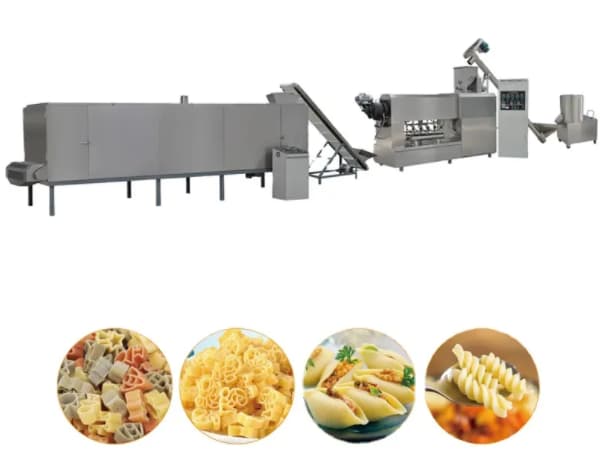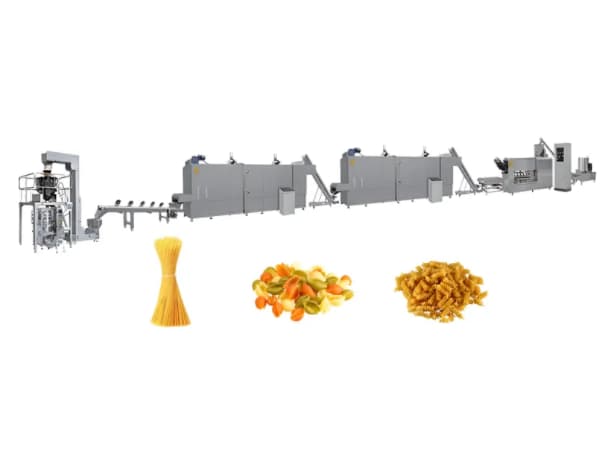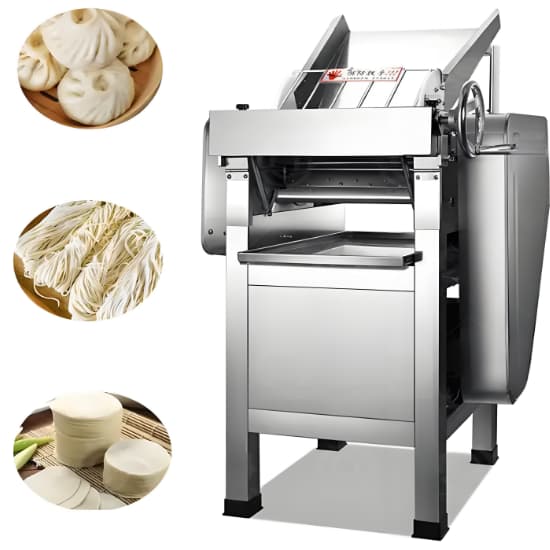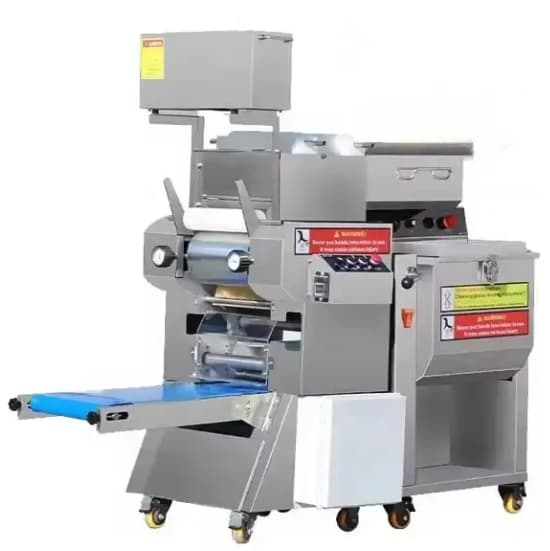Pasta is one of the most consumed foods worldwide, And industrial demand does not stop growing. To meet large -scale production needs, Many food sector companies bet on a Industrial Pasta Machine, An automated and efficient solution that allows to elaborate various types of pasta continuously and controlled.
In this article we explain everything you need to know about these machines: How they work, What types exist, Its advantages, A table of technical parameters and key tips for choosing the appropriate model for your business.

What is an industrial machine to make pasta?
A industrial machine to manufacture folder It is a equipment designed to produce paste in large volumes continuously, hygienic and efficient. Unlike domestic or semi -industrial machines, These are designed to operate for long days, Fulfilling the most demanding food standards.
Types of pasta that can make an industrial machine
- Long pasta: spaghetti, noodles, feptuin.
- Short pastes: macaroni, penne, fusilli.
- Stuffed pasta (with specific attachments): ravioli, tortellini.
- Special Pasta: integral, sin gluten, of spinach, With egg, among other.
Pasta production line at an industrial scale
A Industrial Pasta Production Line includes several interconnected modules, each with a specific function in the production process. These lines are designed to function synchronized, which optimizes the times and reduces the margin of error.
Components of an automated line to make pasta
- Ingredient feed system
Includes hoppers and flour transporters, agua, Egg or other additives. - Mass mixer
Homogeneous mixture controlled by moisture sensors and consistency. - High performance kneader
Guarantees a firm and adequate texture for extrusion. - Extrusor with emptiness (Vacuum extruder)
It provides a densest structure and reduces the oxidation of the mass. - Interchangeable trocas for varied forms
Manufactured in Teflon or Bronze, depending on the desired finish. - Pasta cutter
Adjustable by length and speed. - Pre-died
Reduces surface humidity before prolonged drying. - Drying tunnel or drying chamber
With precise temperature control, humidity and ventilation. - Cooling system
Prepare the pasta for packaging. - Automatic packaging machine (optional)

Technical parameters of the machine to make industrial pasta
Next, A table of common technical specifications is presented in paste industrial machines:
| Parameter | Standard specification |
|---|---|
| Production capacity | 100 kg/h - 500 kg/h (According to model) |
| Energy source | 380V / 50Hz / 3 phases (customizable) |
| Installed power | 20 – 60 kW |
| Construction material | Stainless Steel Food Grade (SS304) |
| Type of extrusion | Vacuum extrusion or conventional extrusion |
| Control system | PLC with touch screen |
| Drying temperature | 40 °C – 90 °C (adjustable) |
| Type of die | Teflon (Soft finish) or bronze (rough) |
| Cleaning | Manual the CIP system (Clean In Place) |
| Dimensions | Vary according to capacity |
| Approximate weight | 1500 kg – 3500 kg |
| Certifications | CE, ISO 9001, FDA (According to destination) |

Advantages of using a professional pasta machine
Continuous production and without interruptions
Industrial machines are designed to operate continuously during multiple daily shifts, Without compromising product quality.
UNIFORMITY AND QUALITY CONTROL
Thanks to their automated systems, They guarantee homogeneous lots, No variations in texture, flavor The form.
Time and labor savings
A single operator can control the entire line from a central interface, reducing operational costs.
Versatility for different types of pasta
Change between forms like Penne, Spaghetti or Fusilli is as simple as replace.
Large -scale pasta manufacturing machine applications
These machines are used in various industries and applications:
- Packaged y paste factories
- Frozen Food Plants
- Central Kitchens and Institutional Oresters
- Product production (OEM)
- Small and medium expanding companies
How to choose the best machine to make industrial pasta
Key factors for making the right decision
- Required production volume
- Types of pasta that are desired to elaborate
- Space available in plant
- Availability of spare parts and technical support
- Desired automation level
- Energy consumption and efficiency
- Ease of cleaning and maintenance
Additional tips
- Request a factory demonstration or a test video.
- Verify if the manufacturer offers after -sales training and assistance.
- Check references from other clients in your sector.

Maintenance and cleaning of the pasta machine
Correct maintenance guarantees the durability of the equipment and food security.
Daily routine
- Troqueles and hoppers cleaning.
- Mass waste removal.
- Visual Motor and Bellings Inspection.
Weekly and monthly maintenance
- Mobile parts lubrication.
- Control system verification (PLC).
- Review of sensors and valves.
Technological trends in the pasta industry
- Remote IoT control for real -time monitoring.
- Integration with ERP systems for traceability and lot management.
- Energy efficiency by heat recovery in drying tunnels.
- Functional Pasta Development: sin gluten, High in protein, vegan, etc.
Conclusion: The machine to make industrial pasta as an ally of growth
Investing in a machine to make industrial pasta is a strategic decision that positively impacts productivity, product quality and competitiveness in the market. Whether you are starting a food project or seeking to modernize your current plant, Choosing the right equipment is key to achieving your business goals.
If you want help to quote a complete line or receive a personalized recommendation according to your needs, I will be happy to help you.
